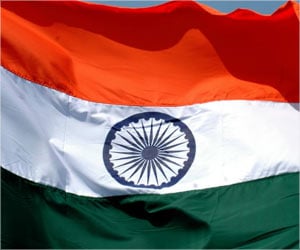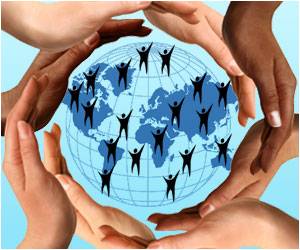Highlights:
- The United Nations University has published an online tool on the 22nd March 2019 coinciding with the World Water Day to guide the nations of the world, particularly those affected by water crisis to achieve the sustainable development goal of clean water and sanitation for all by 2030
- The Sustainable Development Goals (SDGs) are a set of 17 goals identified by the United Nations General Assembly in 2015 to be achieved globally by 2030 in order to transform the world
- One of the 17 goals (namely SDG 6) is to ensure clean water and sanitation for all by 2030. Water scarcity, improper sanitation and bad water quality can adversely affect health, food security and economy of a nation and need to be urgently addressed
Read More..
UN University Online Tool To Achieve Clean Water & Sanitation For All By 2030
The tool has been developed by the United Nations University – Institute of Water, Environment & Health (UNU-INWEH), along with the United Nations Office for Sustainable Development (UNOSD), and national organizations of the 5 partner countries namely Korea, Pakistan, Costa Rica, Tunisia and Ghana involved in the development of the system.Dr. Jong-Soo Yoon, Head of UNOSD, says: "We hope that by sharing knowledge and training people in a proven system, more nations can effectively assess their situations and replace gaps and weaknesses with workable policies, frameworks and action plans. This will ultimately contribute to reducing water scarcity and pollution, mitigating disasters, and halt the ongoing degradation of water-dependent ecosystems."
Key Targets of SDG 6 Hoped To Be Achieved Through the UN Online Tool
- Access to safe and cheap drinking water to all
- Adequate sanitation for all and ending the practice of open field defecation with special consideration for girls and women in vulnerable positions
- Improve water quality by addressing pollutants and chemical waste released into water bodies
- Efficient use of water and better water management to ensure optimal supply during times of scarcity
- Implement water management solutions across all levels ensuring cooperation among various groups
- Protecting water bodies and related ecosystems such as rivers, lakes, wetlands, forests and mountains
- Developing infrastructure and necessary resources required to support water and sanitation-related systems such as rainwater harvesting desalination, wastewater treatment, water efficiency, recycling and reuse technologies
- Call upon local communities to get involved and participate in water management and sanitation programs for more effective implementation
How The Online Tool Hopes To Achieve SDG 6 Targets?
Although the tool is useful to all nations, the guidelines would be especially relevant to the developing nations of Sub-Saharan Africa, Southern Asia, South-Eastern Asia and Central Asia where the water crisis is particularly acute.- The system outlines the 6 step path to achieve SDG6. These include the following
- Collecting data about the current situation using experts and scientists and pooling the information and prioritizing which data to adopt and implement by experts as well as policymakers
- Translate the amassed data into a single evidence-based interface relevant to various users based on which discussions will be held and decisions will be made
- Use the evidence-based data to make plans and find solutions weighing the strengths and flaws of each solution and the challenges that can be expected
- Involve all stakeholders in making plans, address the gaps and build on strengths. Seek the help of international experts and agencies to action the plan. Help and support from leading UN agencies is available to both low and high-income nations
- Implementing the solution across all sectors with agreement from all those involved and the government giving priority to its implementation
- Monitor progress and change plans as appropriate based on the situation keeping in mind the following six components given below which is key to successful implementation of SDG 6
- The tool outlines easy to understand guidelines to identify key strengths and flaws in the six critical components described below, that are necessary for successful SDG implementation and were identified following detailed discussions with the partnering nations. These include the following (3 components relate to capability and 3 to sustainability)
- Capacity of countries to set targets and achieve the set goals
- Strong policymakers and institutional strength necessary to put the plans into action
- Draw a budget plan and weigh the cost-benefit balance of achieving each SDG target and integrate the SDG 6 goal to national schemes where appropriate
- Address women’s water-related needs and empower them and include them in key decision making
- Presence of a strong institutional framework to anticipate and cope with water associated disasters and to protect the affected population from risks and help them to recover from the disaster and minimize damage
- Administration and policymakers must be corruption free and transparent in their actions to win public trust and make the SDG 6 goal a reality
Water & Sanitation – Key Global Facts and Figures
- 30 percent of population does not have access to clean water and 60 percent lack lack adequate sanitation facilities
- A staggering 892 million persons still practice open field defecation
- Over 40 percent of global population is affected by water scarcity and figures are expected to rise
- Over 2 billion people live with reduced or poor access to fresh water and it is feared that the numbers will increase further by 2050
- Over 80 percent of waste water generated by human activities is directly released into rivers and seas without removal of pollutants
- Nearly 1000 kids die every day due to preventable diarrheal diseases as a result of poor quality of water
- Nearly 3/4th of water from rivers, aquifers and lakes is used for agriculture
- Water related disasters account for nearly 70 percent deaths from natural disasters
The United Nations University – Institute of Water, Environment & Health (UNU-INWEH) has published an online tool on the 22nd March 2019 to help nations plan and achieve one of the key sustainable development goals (SDG6), namely clean water and sanitation for all by 2030.
References:
- The United Nations World Water Development Report 2019 - (http://inweh.unu.edu/)
- Sustainable Development Goals - (https://en.wikipedia.org/wiki/Sustainable_Development_Goals)
- Goal 6: Ensure access to water and sanitation for all - (https://www.un.org/sustainabledevelopment/water-and-sanitation/)
Source-Medindia













